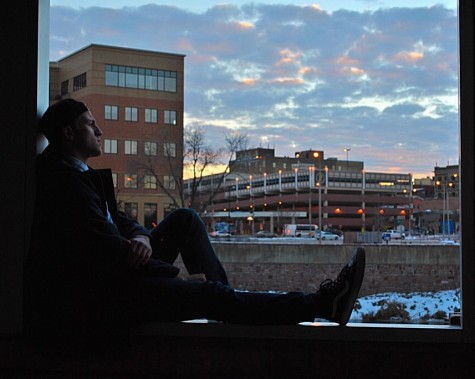Art, mental illness and the cost of creativity
April 20, 2016
In elementary school art classes, many kids come to know the story of Dutch artist Vincent van Gogh and his lost ear. The story goes that due to a deep depression, he cut off his own ear and later painted his wounds in a fittingly titled painting called, “Self-Portrait with Bandaged Ear.” While arriving around 125 years late to the point, psychologists now say that Van Gogh’s overwhelmingly beautiful art may have been linked to his crippling mental illnesses. People often don’t appreciate the pain and hard work it takes for artists to create art.
Artists often speak of sacrificing and struggling for their art, which is not something most people understand. An artist often cuts out the best part of themselves and scatters it across the globe for the world to see. Not many realize how taxing the creative process is to the creator, instead they view the artist as being lazy when they talk about the trouble they see in their profession. Expression comes at a cost of sanity for some, which is why artists deserve the utmost respect for what they do.
In a study headed by the world renowned Swedish Medical University, Karolinska Institute, it was found that people holding jobs in creative fields such as authors, photographers and dancers are overrepresented in the population of the mentally ill. Specifically, writers are 121 percent more likely to suffer from the condition compared to the average citizen and are nearly 50 percent more likely to commit suicide then the average citizen, which just goes to show how taxing it is to create.
Famously, authors such as Ernest Hemingway and Hunter S. Thompson committed suicide both due to forms of depression that were reflected in their respective works. Poet Edgar Allen Poe is known for his dark mood and voice in his writing, but did that tone come from a place of creativity or a tortured mind? Would Edgar Allen Poe have been able to cast such a gloomy atmosphere in his writing if not for his depression?
Beyond art, high risers are often also mentally troubled. Abraham Lincoln suffered from a “medical melancholy” that would be classified as depression today. Albert Einstein suffered from schizophrenic symptoms and his son was later diagnosed with depression. Charles Darwin struggled with anxiety and depression for parts of his career. Would these great humans have been able to leave the legacy they did were not pushed by overwhelming mental illnesses? Though not all high achievers are plagued with mental illness, it cannot be ignored that the creativity needed to produce change is often fueled by a troubled mind. A main reason that mental health is being studied more today than ever before is due to the plight of several famous people which has brought increased awareness to the cost of creativity.
If one is to think about it, creativity and madness are not that far away from each other, both involve making something out of nothing, and both involve inputting immense amounts of emotion and effort into something that might not pan out. Art is best when it is used as a weapon but not a war; in other words, it is best used to reflect emotion, but not the cost of the emotion. Artists travel across the country opening up their heart for the world to see, often showing the worst and best parts of them for public entertainment with little sympathy. People must see the sacrifice artists must make in order to truly understand the cost of creativity.









